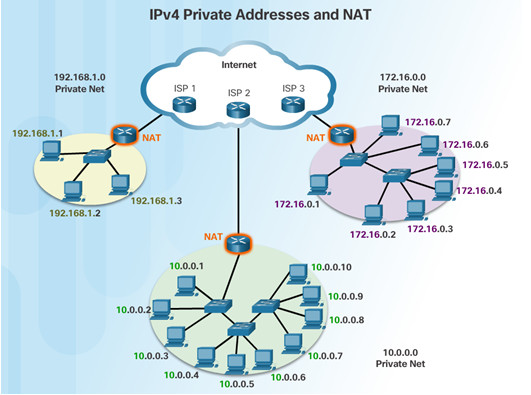
- #Packet tracer activity 9.2.2.6 how to#
- #Packet tracer activity 9.2.2.6 install#
- #Packet tracer activity 9.2.2.6 simulator#
CCNAv2 Completed Packet Tracer H8.4.1. CCNAv2 Completed Packet Tracer 9.2.1.10. CCNAv2 Completed Packet Tracer 9.2.1.11.  CCNAv2 Completed Packet Tracer 9.3.2.10. CCNAv2 Completed Packet Tracer 9.3.2.11. CCNAv2 Completed Packet Tracer 9.3.2.12. IT2 Final Exam Review Answers - Part II.
CCNAv2 Completed Packet Tracer 9.3.2.10. CCNAv2 Completed Packet Tracer 9.3.2.11. CCNAv2 Completed Packet Tracer 9.3.2.12. IT2 Final Exam Review Answers - Part II. #Packet tracer activity 9.2.2.6 how to#
CCNAv2 Custom Notes - How to Access your Control L. CCNAv2 Completed Packet Tracer 9.3.3.3 (CUSTOM). CCNAv2 Completed Packet Tracer 10.1.2.4. CCNAv2 Completed Packet Tracer 10.1.3.3. CCNAv2 Completed Packet Tracer 10.3.1.2. CCNAv2 Completed Packet Tracer 11.2.1.4. CCNAv2 Completed Packet Tracer 11.2.3.6. CCNAv2 Completed Packet Tracer 11.2.4.4. CCNAv2 Completed Packet Tracer 11.3.1.4. You should have 100% (100/100 Points) on your Packet Tracer. R1(config-if)#ip access-group HTTP_ONLY in See how the commands above follow the same type used with the regular 'access-list' command?įinally, assign the ACL to the interface once more. 10.2.2. R1(config)#ip access-list extended HTTP_ONLY Now we need to extend our ACL, so using the designated command, we will create an extended ACL called "HTTP_ONLY", which comes with the 'permit' command and it's following arguments. Then, once finished with both ACL commands, use "ip access-group 100 in" on interface G0/0 (Assign that ACL to that port via command above). First, open the only router on the PT (R1).Įnter your basic mode, then copy and paste the line from the Instruction Window, copy the command string from "i" of Part 1, Step 1 as well as "J" from Part 1, Step 1. Each of the Reflection Questions is worth 2 points.Alternatively, you may use the commands from the following tutorial. Why would there usually be an ASBR in this type of network? ASBR is used to connect external routing domains. How many inter area routes does each router have? R1 and R3 have two IAs and R2 has 4 IAs. Which routers are generating Type 4 and 5 LSAs? None, because there is not an ASBR in the network. Which routers are generating Type 3 LSAs? R1 and R3 because each is an ABR and needs to flood area information from one area to the other. Which routers are generating Type 2 LSAs? Hidden routers in each of the areas that are DRs are. Which routers are generating Type 1 LSAs? All OSPF routers generate Type 1 LSAs. Which router(s) are autonomous system routers? None, all active interfaces on all three routers connect to an OSPF area. Which router(s) are area border routers? R1 and R3. Which router(s) are backbone routers? R1, R2, and R3 are all backbone routers.  Which router(s) are internal routers? R2.
Which router(s) are internal routers? R2. 
Show ip ospf neighbor Reflection Questions Use the following commands to gather information about your OSPFv2 multiarea implementation. Step 2: Use show commands to examine the current OSPFv2 operations. Repeat the steps above for R2 and R3 using a router ID of 2.2.2.2 and 3.3.3.3, respectively. R1(config)# router ospf 1 R1(config-router)# router-id 1.1.1.1 Step 2: Advertise each directly connected network in OSPFv2 on R1.Ĭonfigure each network in OSPFv2 assigning areas according to the Addressing Table. Part 1: Configure OSPFv2 Step 1: Configure OSPFv2 on R1.Ĭonfigure OSPFv2 on R1 with a process ID of 1 and a router ID of 1.1.1.1. Your job is to enable multiarea OSPFv2, verify connectivity, and examine the operation of multiarea OSPFv2. The network is already connected and interfaces are configured with IPv4 addressing. In this activity, you will configure multiarea OSPFv2.
#Packet tracer activity 9.2.2.6 install#
Download and install the Packet Tracer software by signing up for the Introduction to Packet Tracer course, which teaches you the basics of using the tool. It’s available directly through the Cisco Networking Academy.

#Packet tracer activity 9.2.2.6 simulator#
Part 2: Verify and Examine Multiarea OSPFv2 Background Packet Tracer is a free network simulator tool for certification exam preparation, particularly for CCNA students. 9.2.2.6 Packet Tracer – Configuring Multiarea OSPFv2 Addressing Table Device








 0 kommentar(er)
0 kommentar(er)
